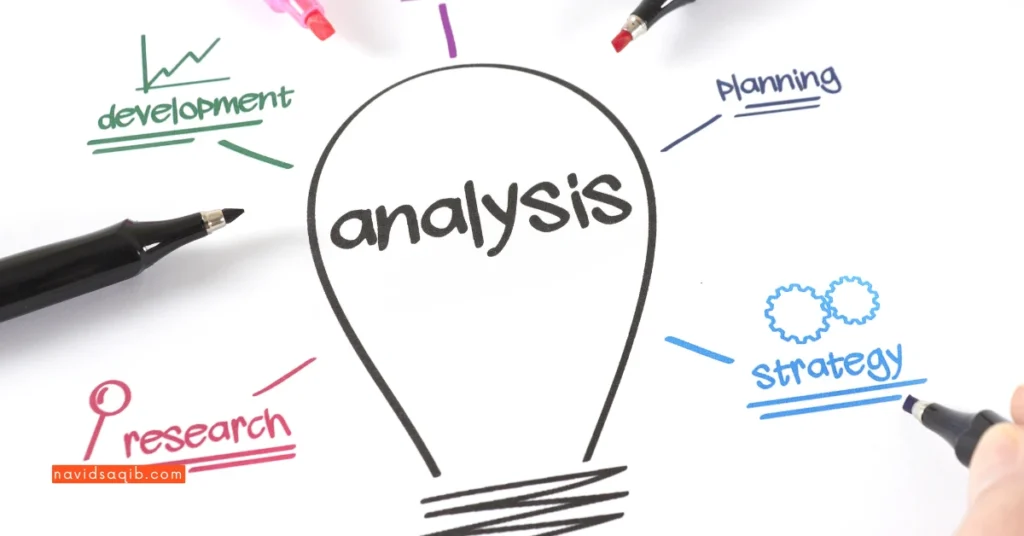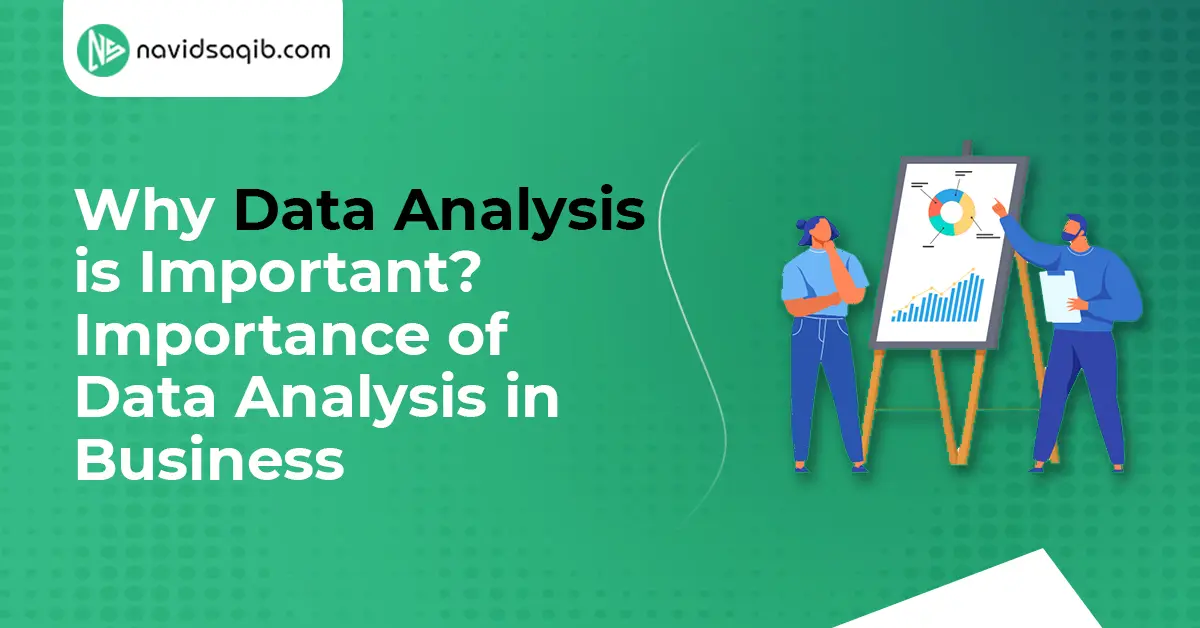Data analysis plays a key role in processing raw data to meaningful and doable insights. It can act as the basic pillar of influential research. You can understand complex datasets by analyzing their data through a systematic approach.
Data is an important asset that can be optimized with the help of the research process. It can improve results by revealing patterns and trends. This will help the supporting researchers to steer challenges with accuracy and clarity.
It provides research methods. It also ensures data reliability. So, it helps you get accurate results or near-to-accurate results. Why Data Analysis is Essential in Research?
We will explore the reasons why data analysis is important in research. We will see its effects on decision-making and the research framework. It can enable the experimenters to derive data-driven insights. The evidence-based analysis can guide every step.
Data analysis acts as a light. It fills the gap between theory and practice. Data analysis focuses on accurately interpreting data. This can impact research.

Stay Ahead in Your Studies!
Don’t miss out on valuable resources that can help you excel in your academic journey!
Why Data Analysis is Essential in Research?
Data analysis acts as the backbone of the research process. It turns raw data into useful information. It helps gain insight into the data. This meaningful info further led to meaningful discoveries. Data analysis ensures the reliability of data due to its valid results and trust in the results. Its research methods can help you.
They can analyze and structure studies effectively. It will further lead to the precise and accurate interpretation of information. It can support the evidence-based decision-making. You can add this as an essential element in a series of research framework processes.
How Does Data Analysis Contribute to Decision-Making?
Data analysis is vital for decision-making. It turns raw data into insights. It helps to produce meaningful results. It’s a basis for evidence-based decision-making. It shows that more choices can be rooted in facts than in assumptions, or hypotheses.
It helps researchers find prospects using strategic analysis. It offers the researchers clear and doable insight into complex situations. This is the whole process of robust data strategy. It helps researchers make decisions that align with their long-term goals.
Tools like predictive analytics simplify data analysis. Data analysis can predict future possibilities, beyond past trends. It can help rescuers form informed hypotheses.
This is the key skill of data analysis. It ensures data-backed decisions to improve the search process and results in research. Researchers can empower the data analysis process with in-depth research insights. This process is a key bridge to finding ideas in data analysis. It helps in decision-making.
How Does Data Analysis Help Identify Patterns and Trends?
Data analysis is necessary to uncover data patterns and trends. It helps to make sensible outcomes from complex datasets. Pattern analysis finds hidden links in data correlations. It interprets the data to reveal unseen connections.
utilizing tools is ideal for forecasting trends and predictive modeling. The data analysis researchers use these tools to predict future trends. They also explore ways to find emerging research trends.
Pattern recognition allows us to achieve valuable insight discovery. It helps researchers make better decisions. This leads to useful, relevant results that can also predict the future.
Why Is Data Accuracy and Reliability Important?
Two elements are crucial in research for high-quality data: accuracy and reliability. They both help to derive trustworthy results from raw data.
Sampling techniques are vital for extracting data for analysis. They also help reduce bias. These techniques help researchers to get reliable, consistent data. By focusing on data validity and data cleaning, researchers can experience these benefits.
After these techniques, the next step is to validate the data. It must support the research’s accuracy. It confirms the information is precise and dependable. It can lead to credible, doable results.
What Are the Key Components of Data Analysis in Research?
Data analysis consists of pivotal elements that play an important role in research. These elements include key steps for accurate, reliable results from data analysis.

The first step is the Sampling technique. It helps researchers get representative data. Then, data cleaning is important. It ensures the information is error-free and consistent.
After data cleaning, data validation confirms the findings’ accuracy. Then, pattern and trend analysis tools reveal hidden insights in complex datasets.
All these elements work together to support the data-driven insights process. This process helps the researcher make informed decisions. It also improves the quality of the research results.
Let’s explore each of these steps further:
How Do Researchers Collect and Manage Data?
Researchers use various data collection techniques to get useful information for their studies. This process selects the right research tools. They must measure accurate variables and provide data that meets the study’s goals.
The data collection process includes steps to gather data. They will be taken carefully to avoid any bias. It results in the relevant information with research questions.
Researchers can use proper statistical methods to analyze the data. This will help them get meaningful results from their findings. In data collection management, researchers use ethical data management. It protects the privacy and security of their findings. It also ensures compliance with legal standards.
Researchers always ensure ethical data management. They don’t compromise privacy, security, or compliance. In any dataset, the most important part is to organize and structure it. This ensures efficient and accessible data analysis.
This will be possible by attempting ethical principles. This lets them manage their data with an efficient, organized approach. The obtained conclusions by using data handling are credible and reliable.
Good data management protects researchers’ study data. It also upholds high ethical research standards.
What Are Statistical Methods and How Are They Applied?
Statistical methods help researchers draw valid conclusions from both analyses. They are crucial tools for analyzing and interpreting collected data.
These methods use various tests to check the current hypotheses. They increased the data’s reliability. Quantitative models explain numerical data. Qualitative research finds patterns and trends. These methods validate results and find significance in the findings.
During research, the researcher tests the data. This checks the results’ accuracy and the models’ effectiveness. Researchers can use data analytics to measure the effectiveness of a data-driven approach. It can reveal insights that allow for further exploration of the facts.
Their conclusions are accurate and reasonable. They used quantitative insight’s statistical methods. Researchers then make decisions based on the evidence they get. This method is vital for testing hypotheses. It boosts research quality and results.
What Is the Role of Data Visualization in Computing Findings?
Data visualization is key. It turns complex research into clear insights. Many tools are used in this process. Commonly used are graphs, charts, and other graphics. These tools help researchers explain their work to non-experts.
Researchers widely use data visualization techniques. They turn numbers into stories to engage viewers and highlight key points. This method provides insights through patterns, trends, and research, not long reports. It makes the data more meaningful accurate and reliable.
Data visualization acts as a bridge to understanding complex ideas and simple familiarity. It makes it easy for the researcher to spot important information and connect the dots.
“Visual storytelling” means sharing the researcher’s findings in an engaging, clear way. Storytelling can be done in many ways. Charts, graphs, and other visuals can make things nicer. But, they also describe data clearly and highlight its real-world importance.
How Does Data Analysis Enhance Research Outcomes?
Data analysis improves research. It turns raw info into insights. The researcher reveals valuable research findings by interpreting trends, patterns, and data relationships. It improves the data understanding and helps in making meaningful decisions. These techniques provide strong proof of research results. So, they become reliable and effective.
Data analysis turns complex data into actionable information. This pushes research forward, achieving precision and clarity through transparent processes and tools.
How Can Predictive Analytics Drive Future Research?
Predictive analytics shapes future research. It provides tools to interpret results and spot trends. In research, scientists use predictive models to forecast the future. They analyze past and present data. IT process is the smarter way to decision making. Its ideal approach is to improve the hypothesis process. It is the basis of hypothesis forecasting. This helps the researcher to find and focus on the best paths. In advanced analytics, researchers gain the storing insight to model the future precisely. These insights drive innovation.
They guide researchers to choose effective, successful techniques. Using tools to model and forecast trends makes it easy to spot connections and patterns. Researchers design and run experiments to test and refine hypotheses. They aim to shape future research strategies with confidence. Predictive analytics turn raw data into insights. They create a clear view of future trends.
How Does Data Analysis Support Qualitative and Quantitative Research?
Data analysis is closely linked to qualitative and quantitative analysis. It offers a balanced approach to research. Collecting numerical data provides deep insights, not just surface-level ones.
Mixed research methods let the researcher explore patterns, test theories, and find connections. This leads to better results. It is a dual-method approach which enhances the scop and in-depth search outcomes. While highlighting the significance of qualitative research and supporting data-driven conclusions.
How Does Sampling Impact the Quality of Research?
Sample shapes the research accuracy and reliability. It checks if the chosen group, which represents the whole population, is good enough. Selecting representative samples ensures the fact that outcomes reflect reality. Methods like random sampling reduce bias and enable unbiased data.
Better participant selection improves the sample’s integrity. It ensures all needed, relevant variables are included.
Effective sampling in research protects the quality and relevance of data. It works if researchers focus on fairness and inclusivity. It leads to credible accurate and trusted results.
How to Conduct Effective Data Analysis in Research?
Effective data analysis needs a clear strategy and defined goals. It also requires the right tools for each task. We must clean and organize the data to get accurate, reliable results. Selecting appropriate analysis methods ensures driving meaningful patterns and relationships.

Results interpretation is critical to validate that outcomes align with the research goals. Data visualization with charts and graphs makes the results insights easy to understand.
A structured approach helps the researcher turn rat data into useful info. It leads to better outcomes.
What Are the Best Practices for Data Interpretation?
Data interpretation starts with clarifying the data. This leads to organized, analyzed results that highlight key patterns and trends. To get meaningful research results, we must reduce bias and be objective. So, we must choose the right methods.
So, using analytical best practices, researchers turn the raw data into findings. These findings help make real-world decisions.
It is a careful way to analyze results. It finds valuable insights. It ensures the outcomes are reliable and meet the research goals.
How to Ensure Information Quality in Data Analysis?
To ensure data quality in analysis, start with data verification. Data verification checks the reliability and accuracy of collected data.
Quality control measures refine the raw data. They reduce errors and lead to high-quality data. This data is the foundation of credible analysis.
Researchers must focus on data refinement and consistency. They seek help to get precise results. They enhance the accuracy and trustworthiness of the outcome. Quality management of the process ensures each insight is sound. It strengthens the research.
What Challenges Do Researchers Face in Data Analysis?
Researchers face many challenges, like data complexity. Merging long datasets to find trends becomes difficult. The second challenge is applying the right statistical methods. It requires expertise and precision to solve.
Big data and data management issues test a researcher’s skill at keeping data efficient and accurate.
To solve these research obstacles, researchers need advanced tools and strategies. They must streamline data handling and minimize data complexity. It then ensures the effectiveness of data analysis and provides reliable outcomes.

Stay Ahead in Your Studies!
Don’t miss out on valuable resources that can help you excel in your academic journey!
Conclusion
Data analysis is vital for successful research. It provides accurate insights for informed decisions. It helps researchers find patterns that lead to breakthroughs. It ensures future decisions are made with confidence.
Getting actionable insights from complex data improves research and ensures reliable results. Data analysis elos to clarify complex data and hsap it toward impactful results. it influnets the directions of research studies and its real-world applications. Data analysis is important in research. It turns raw data into valuable, precise outcomes.
FAQs
What Is the Difference Between Qualitative and Quantitative Data Analysis?
Qualitative analysis is used to sort out non-numeric data. It focuses on the experience and meanings of numeric data. quantitative analysis further us the muartic data to analyse patterns and measure them.
This method’s comparison shows that qualitative research yields deeper insights. In contrast, quantitative analysis provides statistical results. These methods show key data differences in how raw info is turned into meaning.
Why Is Data Interpretation a Critical Step in Research?
Data interpretation is crucial in research. It turns raw data into findings.It offers valuable insights. It generates insights by finding patterns in data. It leads to more understandable results. Without proper interpretation, data can not be meaningful and can lose its context. It will become difficult to drive meaningful analysis and get accurate conclusions.
What Are the Benefits of Using Statistical Methods in Research?
statistical methods help to identify patterns and trends which leads to more reliable findings. These techniques improve the result accuracy by complementing structured approaches that analyze the data and ensure data consistency throughout the research study. statistical techniques, helps the researcher to achieve clear outcomes and make informed decisions
How Can Predictive Analytics Improve Research Decision-Making?
Predictive analytics affect the decision-making in research. Researchers use predictive models to forecast potential outcomes. This is the right approach to test the hypothesis and make it more accuracy. It leads to informed decisions by shaping the study direction.
What Tools Are Commonly Used for Data Visualization in Research?
The basic tools for data visualization in research are graphs and visualization software. They help the researcher to show research findings clearly. It helps researchers to turn complex data into understated char graphs and infographics. It ensures a clear presentation of key insights and trends.
Read More:


